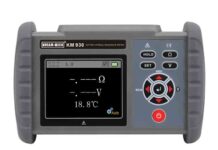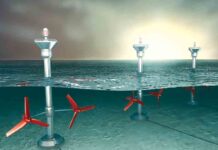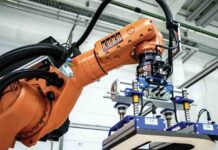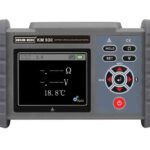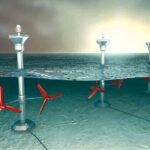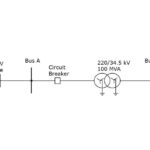- What kind of potential of growth are you finding in the Indian T&D sector?
The potential growth of Indian T&D is definitely great and achievable. This is mainly because the rate of growth of this particular sector lags behind in the ‘Growth of Generation Capacity.’ The National Transmission Authority of India is an initiative by the Government of India to start the National Forum by sidelining the regional compulsions. This is similar to National Movement initiated by Mr. Atal Bihari Bajpai, the then Prime Minister of India. It is a requirement just like the National Highway Authority of India. Now, expanding the Road Network throughout the expanse of India is seen as a ground reality. If accepted and agreed upon, the National Transmission Authority of India will be the pioneer for successful growth in this segment.
- What are the challenges in this segment?
There are quite a few challenges that must be tackled. The first of these are regional roadblocks in the expansion of National Transmission Grid Network. The fact that there is no nationally approved platform for acquiring uniform approval of T&D schemes is also a major challenge. Most of the newly upcoming generating power houses are situated in remote corners at pit heads of coal and other fuel heads. Approval and laying of the transmission network is also mostly dependent on regional policies of the states on that particular route. Therefore, it is vital that the National Authority be constituted to have uniform flow and distribution of power to the states that need it.
- What’s your comment on the sluggish fund flow in this segment?
The ‘sluggish fund flow’ is mostly because of the fast cash refund in the generation segment in the private sector. Most of the generating projects such as hydel and coal based projects take 48 to 60 months to be ready for generation. On the contrary, laying EHV Transmission line of level of 765kV- or even 400kV- sometimes take years in getting clearance. Similarly, most of the time survey of transmission line has to be repeated because of local hurdles such as local influential leaders. Due to reasons like these, the time frame for completion of Transmission Projects cannot be defined correctly even after the sanction of the project. Apart from these reasons, further return in form of wheeling charges of transmitting of power is much slower and meager in power development.
- What kind of capability have you developed to provide a turnkey solution in this segment?
We have taken the measure of creating a strong infrastructure consisting of a team of experienced engineers having a minimum of 20 yrs experience in fields such as design, planning, procurement, and management of design. This team is supported by young and talented engineers who have some experience in their own fields.
Preference is given to those longing to perform and deliver. The main engineering team is also supported by a required infrastructure of foremen, fitters, electricians, and cable laying and termination experts. Every team is given a firm time frame i.e., a ‘PERT Chart’ to make sure they complete the project in time. There is a special team known as the ‘protection and testing team.’ It is a team of experienced engineers supported by qualified test inspectors and test mechanics to complete the ‘pre- commissioning testing’ of the constructed project. They declare it fit for testing and get clearance by ‘Protection Wing of State Electricity Board’ and ‘Chief Electrical Inspector of (respective) State Government.’ After this entire process, the project is ready for commission on schedule. An important thing to be mentioned here is that the head office finance department is headed by a team of experienced charted engineers supported by financial experts.
- Do you have any immediate plan to enhance your capability beyond 400kV substations?
Definitely. We have an ever increasing hunger to raise ladders of technical proficiency coupled with the zeal to perform and excel in every EHV field. We are ready to take up each and every challenge – may it be 400 or 765kV. We are definitely open to new projects and augmentations, additions and alterations in and EHV project. We are already in the process of upgrading our infrastructure in order to take up the challenges that I mentioned before.
- What kind of guarantee do you offer for your projects?
We are currently the leading system partners with top manufacturers of each major product being used in any EHV Grid Project. Areva makes power transformers, Schneiders makes relays, Siemens makes all types of EHV circuit breakers and isolators, Mehru makes CTs and PTs of all voltage levels and Havell’s makes cables of all voltage level. These are only a few of the top manufacturers that we are working with.
We have a strong team for protection testing and giving value added services. The team is headed by senior engineers who have over 30 years of experience in this field. They are also supported by talented engineers for ensuring our after sales service.
- What percentage of your company’s annual income is spent for R&D?
At present, more than 2% of our annual income is spent for R&D. We are of a firm view that no corporate can expand well or capture the market appropriately without the proper guidance of their R&D cell. Furthermore, this cell is to be given a free hand in doing any research connected with the growth of the company. We are planning to enhance this percentage to 4 to 5% of our annual income in the next three years.
- Why do we see so much failure in the distribution transformers in India?
Although this is the oldest industry in India to cater to the basic need of distribution systems, originally it was governed by top corporates. The quality in those days up to the 1980s was ‘par excellence.’ After the 1980s, medium scale manufacturers took over this industry and started sale at much lower price because of low infrastructural expenses.
Due to this reason, major corporates lost interest in this segment of the industry. Somewhere around 1990 and beyond, the industry went into the hands of small scale manufacturers, and they started to complete the product at ‘throw-away’ prices. So, the excessive failure that we see is because of and at the cost of quality compromise.
- What would you like to communicate to your potential customers to aid their decision making (in purchase)?
Our continual advice to the potential customer is that they go in for a proper designing expert for evaluating their future planning and requirement correctly. We request them to be vigilant while selecting products, and urge them to choose top quality products only. They must engage suppliers who are competent and will look after everything right from the supply to the commission of equipment. We request them to evaluate the capability of their supplier of EPC service to give ‘long term after sale service’ by original manufacturers. Lastly, but most importantly, we urge you to never compromise quality for a small affordable extra expenditure.


